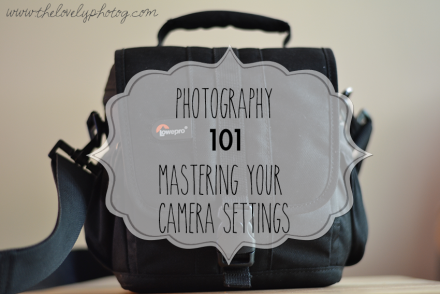
Welcome to the second installment of my new
Photography 101 Series: Understanding Your Camera Mode Settings!
This is basic beginner photography knowledge and tips that can help you on your photography journey—whether you are a blogger, photographer or hobbyist.
This series will be broken down in 3 parts and the first post can be found here of the breakdown of each subject in the series.
(Just In Case You Missed It: Part I: Understanding Exposure)
So lets begin…
Part II: Understanding Camera Mode Settings
- Portrait
- Landscape
- Macro/Close-Up
- Sport/Action
- Night Scene
- Movie Mode
Portrait Mode- This camera mode setting is best used when you want to focus on a single subject for a close up and personal portrait. A DSLR camera will generally choose a larger aperture (small f stop number), so that the focus will be more on the foreground or subject, than the background.
Landscape Mode-This camera mode setting is best used to capture wide open spaces for photographing nature, landscape and buildings. The camera will use a smaller aperture (large f stop number) to include as much of the foreground and background possible. This will also give you a large depth of field to help capture a wide scene of your landscape.
Macro/Close Up-This camera mode setting is best used when you want to photograph something (small or large) up close. It’s generally used to shoot flowers, insects, and other objects. The camera will give you a very narrow or small depth of field, and you may need to use your tripod in order to keep your focus on the object. The flash or a lot of natural light is beneficial when shooting in this mode, as it will help to increase the focus on your object.
Sport/Action-This camera mode setting is best used when photographing moving subjects. Best to use when photographing a game or children, this setting helps to freeze the action by increasing the shutter speed.
Night Mode- This camera mode setting is best used for night or low light situations. The camera will use a slower shutter speed to capture more of the background settings and will also use a flash to get the foreground details. Using a tripod will also help in decreasing blur when in this mode. Blur can be used to your advantage if used in party settings, because the blurring of party lights or dance floors in the background, add a cool effect.
Movie Mode-This camera mode setting allows you to record video (picture and sound) and offers a variety of settings to do it in. 144240, 360, 640, 720, 1080 resolution settings are the most common settings depending on the type of camera you have.
Cameras come with a variety of camera mode settings. The other camera mode settings might include, Museum, Party/Indoor, Beach, Snow, Cloudy Etc . The key is to use the correct settings in the correct moment.
Tell Me…
What camera mode setting do you use the most?

 Source: Filmmaker IQ
Source: Filmmaker IQ